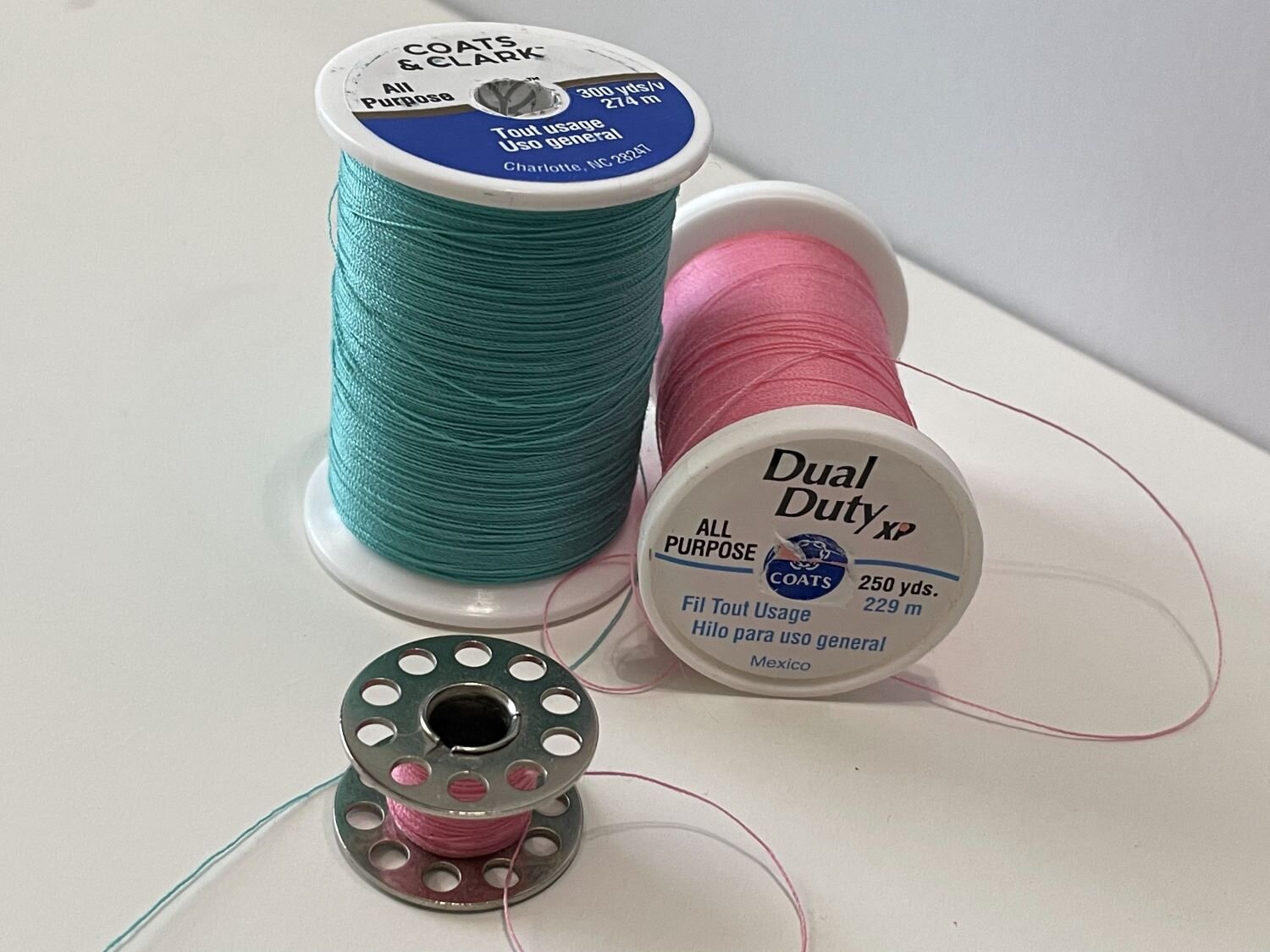How to Buy the Right Thread for Your Sewing Machine and Sew Clothes
Just like using the correct needle, using the right type of thread will make a huge difference in your sewing. Not only are there countless brands of thread, but also different fiber content and spool types. Today I’m going to teach you the different components of thread and how to use them to suit your sewing needs.
FIBER CONTENT
Sewing thread is made by twisting yarns of the same thickness together to form a circular cross section. Home sewing thread allows ease of movement through sewing machines when tension is applied and the thread goes through the needle.
Quality thread is smooth, resists friction during sewing, and has enough stretch to keep from breaking or making seams pucker. Thread needs to be strong enough to hold seams together with regular wear and laundering.
Thread is made from natural fibers (think cotton, wool, linen) or synthetic fibers (think polyester, nylon, rayon).
Cotton thread works well with fabrics made from cotton and linen, because they all shrink the same way. It’s not recommended for sewing synthetic fabrics for the same reason; the cotton thread will shrink when the fabric doesn’t and that will make the seam pucker.
100% Cotton thread is also widely available, though usually labeled as quilting thread. I didn’t think there was a big difference between quilting thread, until I bought some by accident. The quilting thread was WAY too thick to fit through the eye of my needle! Low quality cotton thread can shrink when washed. And just like 100% cotton fabric, cotton thread produces lint.
Polyester makes a strong durable thread suitable for all types of sewing. Polyester thread doesn’t shrink or fade when washed. And polyester thread doesn’t produce a lot of lint, which helps keep you machine clean. Most of the “all purpose” thread at fabric and craft stores is 100% polyester.
Consider the pros and cons of fiber content and choose the best one for your sewing project. Personally, I use polyester thread for low lint and durability in the wash.
SPOOL TYPE
Perhaps the least considered feature when making a thread purchase, is the type of spool. No, I’m not talking about small vs. large spools. I’m talking about how the thread is wound on the spool.
WAY 1: Stacked. The thread comes off the spool from the side. Stacked thread works best when the thread spool holder is vertical to the top of your machine.
WAY 2: Cross-wound. The thread comes off the spools from the top. Cross-wound thread works best when the thread spool holder is horizontal to the top of your machine.
Choose your thread based on your machine’s spool holder and get rid of thread feed problems. All of my sewing machines have vertical spool holders, so I’ve always used stacked thread.
BRANDS OF THREAD
Everyone has their favorite thread brand. When you are just starting to sew, it makes sense to buy the brands that are readily available in your local sewing and crafting store. The two most common thread brands are Coats & Clark (also just labeled as Coats) and Gütermann. These are the two brands I bought when I started to sew and they are the brands I still buy today.
In my opinion, you can’t go wrong with Coats & Clark. The company has been around for 200 years. It was the first cotton thread mass produced for public use during the industrial revolution and changed home sewing forever.
These days the all purpose thread is 100% polyester. Cotton/poly bends and 100% cotton are also available. There are also heavy duty threads for sewing denim and upholstery.
What makes Coats & Clark so appealing is the array of color choices. No matter the color of your fabric, you’ll always be able to find thread to match.
Gütermann is another easy to find thread. The company has been around for 150 years. It is also 100% polyester and comes in a wide variety of colors.
The biggest difference between these two thread companies is the way the thread is wound on the spool. Coats & Clark thread is stacked. Gütermann is cross-wound. As discussed above, buy the right spool for your particular machine.
That’s my brief run down on thread and what to consider when you’re new to sewing. Buy the right thread for your machine and sewing project, and you’ll be rewarded with smooth seams that stand up to wear and tear!
Want more sewing tips and tricks from Sew Sew Lounge? Click here to join the interactive Facebook group, Let’s Talk Sewing for Beginners! hosted by Sew Sew Lounge. Bi-Monthly live events and plenty of helpful info to get you up and sewing in no time. See you on the inside!






